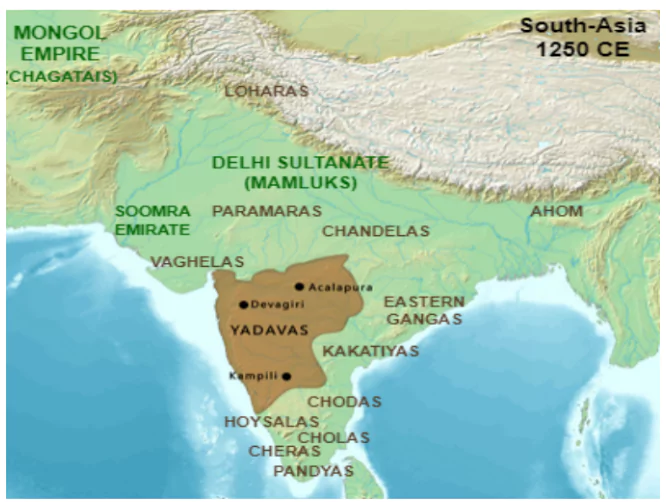![]() May 14, 2024
May 14, 2024
![]() 12944
12944
![]() 0
0
The Yadavas of Devagiri were a significant dynasty in Indian history, tracing their lineage to Lord Krishna’s Yadu family. They established their kingdom with Devagiri as its capital, controlling vast territories in present-day Maharashtra, Karnataka, and parts of Madhya Pradesh. Known for their military prowess and patronage of arts, the Yadavas left a lasting cultural legacy, particularly in Marathi culture.
 Dynastic Origins: Founded by Dridhaprahara, with Seunachandra expanding their influence in present-day Khandesh.
Dynastic Origins: Founded by Dridhaprahara, with Seunachandra expanding their influence in present-day Khandesh.
| Must Read | |
| Current Affairs | Editorial Analysis |
| Upsc Notes | Upsc Blogs |
| NCERT Notes | Free Main Answer Writing |
The Yadavas of Devagiri played a crucial role in shaping the political and cultural landscape of medieval India. Despite their significant achievements in expanding their kingdom and fostering cultural development, internal conflicts and external pressures contributed to their eventual decline. The end of their dynasty marked the end of an era in the Deccan region, paving the way for new powers to rise and reshape the course of history.
| Related Articles | |
| ANCIENT HISTORY | MEDIEVAL HISTORY |
| MARATHA EMPIRE [1674-1818]: MARATHA-MUGHAL CONFLICTS | Indian Art & Literature Institute: Sahitya, Sangeet Natak, Lalit Kala Akademi |
<div class="new-fform">
</div>
Latest Comments